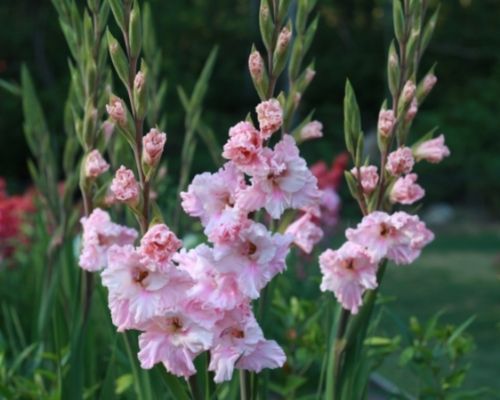Your Guide to Planning, Planting, and Growing Gladiolus
Gladiolas have been loved by generations of gardeners. These summer-blooming bulbs produce elegant, 3-foot flower spikes with orchid-like blooms. They look spectacular in a vase and are suitable for growing in flower gardens, container gardens and even vegetable gardens.
Gladiolas are available in a rainbow of gorgeous colors, ranging from white, yellow, pink and lavender, to rose, burgundy, purple and even green. The bulbs are incredibly easy to grow. Just plant them in spring for flowers in late summer.
Start with a Better Bulb
It’s easy to see a difference in quality when you compare two sizes of gladiolus corms. Larger corms (like the one on the left) grow into bigger plants and produce more impressive flowers. Longfield Gardens sells only plump, 12/14 cm gladiolus corms, which outperform smaller, 10/12 corms.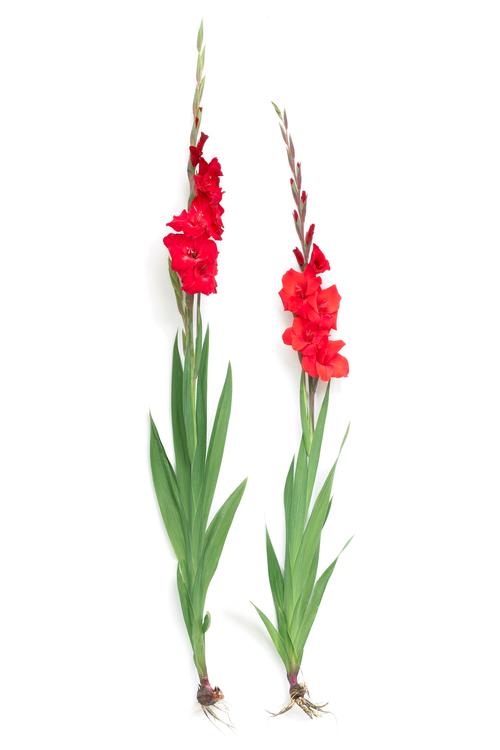
Plan for Success
Shade and Sun: Gladiolus grow best in full sun, though they will also flower in partial shade.
Zone: Gladiolas are winter hardy in zones 7-10. In colder zones they can be grown as annuals or the corms may be dug up in the fall and stored indoors for replanting the next spring. Not sure about your growing zone? Check the USDA Hardiness zone map here.
When to Plant: Gladiolus corms may be planted from spring through early summer. The flowers bloom approximately 90 days after planting.
Watch for Thrips: These tiny sucking insects are almost too small to see. Yet they can create big problems for glads. As thrips draw out plant juices, they can cause the developing flowers to wither. Control these pests early in the season with an organic pesticide approved for glads. If you are storing gladiolus corms indoors, keep them at 40°F for at least 4 months to help kill any overwintering thrips.

Where to Plant Gladiolus
Cut Flower Gardens: Gladiolus corms are inexpensive and quick to plant. They also don’t take up much room. You can grow as many as 50 plants in a 2 ft x 4 ft. area. Cut the stems when the first two blossoms are fully open. If you wish, you can clip off the top 2 or 3 buds. This will encourage the rest of the buds to open in sequence from the bottom up. Pull off the spent booms to keep your arrangement looking fresh.
Flower Beds and Borders: Gladiolas begin blooming in late summer when many other flowers are starting to fade. Their flower spikes stand tall among other plants, adding both color and vertical interest. The glad’s sword-like foliage is an attractive addition to the garden both before and after the flowers are in bloom.
Containers: Gladiolas look wonderful in a big planter combined with other bold topicals such as cannas, elephant ears and coleus. You can also plant them in containers on their own and transplant them into the garden just before they come into bloom.
Vegetable Gardens: As you remove early summer vegetable crops, such as peas, lettuce and spinach, plant some gladiola corms in the empty spaces. By late summer you can be picking brightly colored gladiolus to adorn your dining room table.
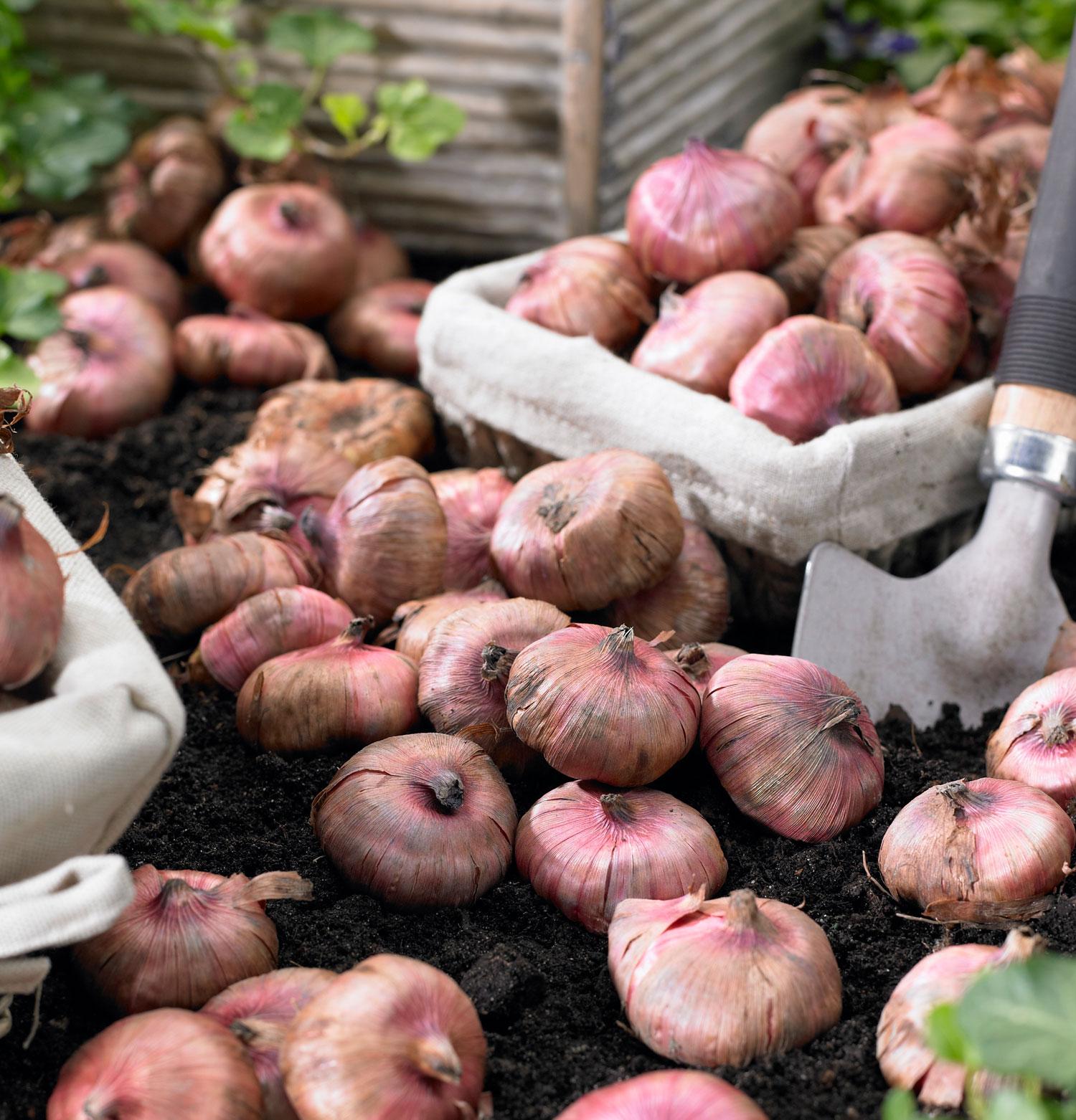
How to Plant Gladiolus
Gladiolas are easy and adaptable, but grow best in fertile, well-drained soil with consistent moisture. Plant the corms 6” deep and about 3-4” apart with the pointed side facing up. Planting even a little deeper will help keep the stems upright once the flowers begin to open.
In a cutting garden, gladiolus can be planted in a grid pattern, 5” on center. In beds, borders and containers, they look best planted in informal groups of 7 or more bulbs.
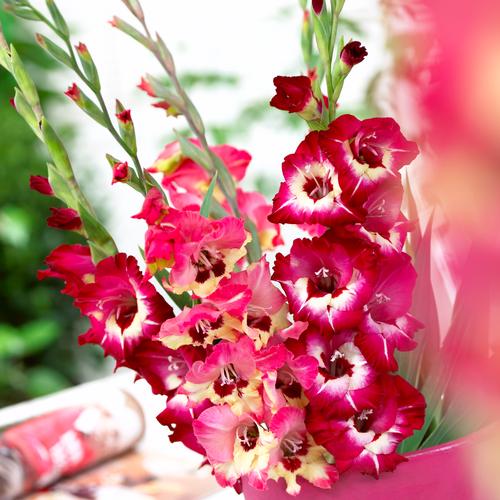
How to Get Flowers from Late Summer Through Fall
Planting time determines bloom time, so instead of planting all of your gladiolus corms at once, purchase enough so you can plant a handful every week from spring through early-summer. It typically takes 10 to 12 weeks from planting to flowering, so your last planting can be about 12 weeks before the first frost date in your growing zone.
Planting a couple different types of glads is another way to extend the flowering season. In addition to the full size hybrids, consider planting peacock orchids (Acidanthera or Gladiolus muriale), as well as the hardier, dwarf gladiolas know as Gladiolus nanas or Glamini glads.
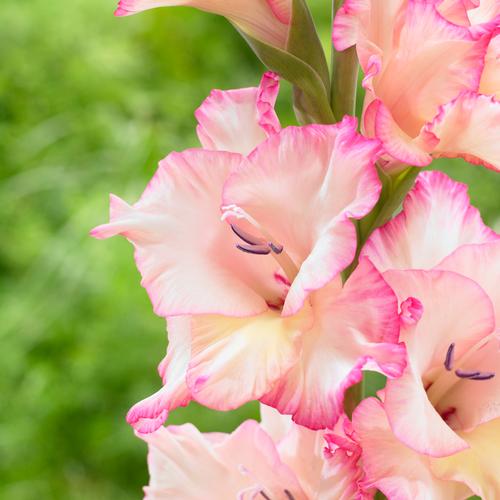
What to Expect from Gladiolus
When you plant a gladiolus corm, it already contains everything needed to produce a 3 to 4 foot flower spike with up to 20 buds. The florets open one by one from the bottom up, so each stem provides up to two weeks of colorful blooms.
As the flowers begin to open, the stem may get top-heavy and start to lean. For a quick fix, use slender bamboo canes to prop the stems. Just slip a cane beside any stems that aren’t standing straight and use twine to secure the stem. To support an entire bed of gladiolus, put stakes or canes on the corners and sides of the bed and corral the stems with twine.
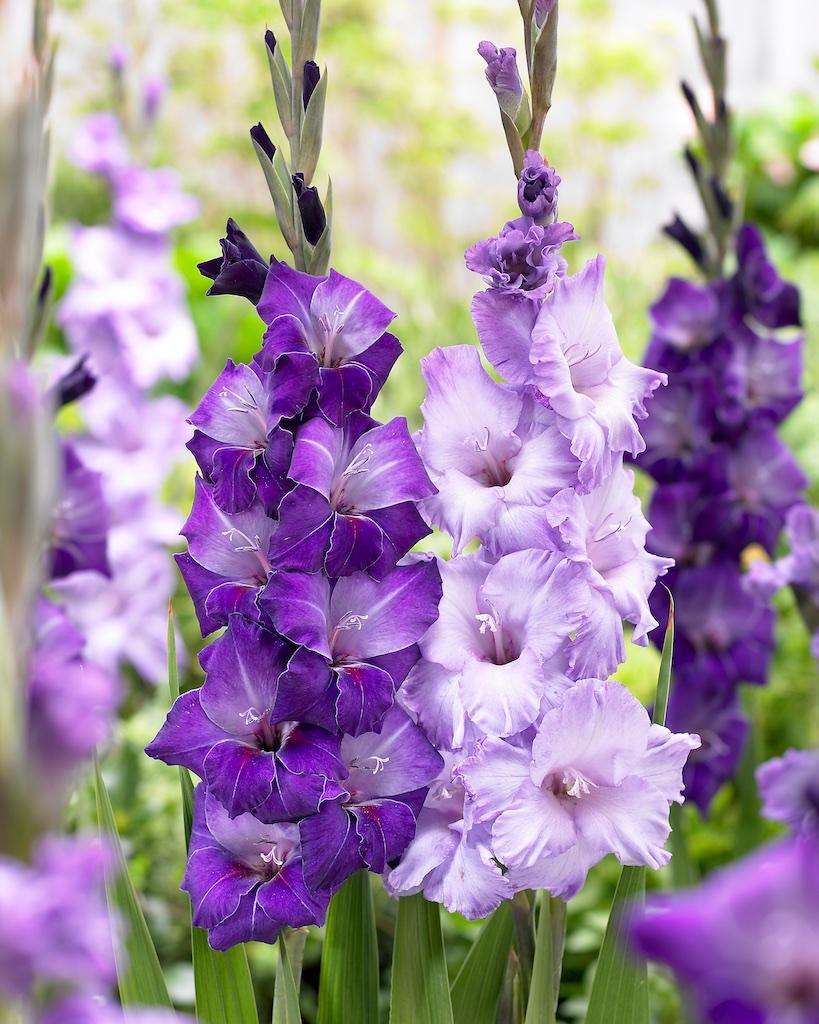
Caring for Gladiolus After They Bloom
Gladiolus bulbs are winter hardy in zones 7-10. In these areas, the corms may be left right in the ground over winter. In colder zones, the corms need to be dug up in the fall and stored indoors for replanting the following spring. Another option is to treat gladiolas as annuals. Simply pull out the plants at the end of the season and plant fresh bulbs each spring.
If you want to save the corms from one year to the next, here's what to do. During the growing season, fertilize the plants and keep the area weeded. When the plants have finished blooming, cut off the flower stalks and allow the leaves to continue growing.
After the first frost, use a garden fork or spade to lift out the entire plant, keeping the foliage attached to the corm. Let the plants dry in a well-ventilated area for a couple weeks. When the foliage has shriveled and the stems are dry, cut off the corms, leaving about an inch of stem attached.
Newly dug corms often have little round “cormels” clinging to them. If you want to try your hand at growing your own supply of gladiolus bulbs, you can start with these miniature corms, though it will take years for them to reach blooming size. Otherwise, just use your thumb to gently rub them off.
Layer the corms in dry peat moss and store them away for the winter in a cool place that is 40-50°F. Make sure they don't freeze. Next spring, simply remove any dried bits from last year’s corms and replant.
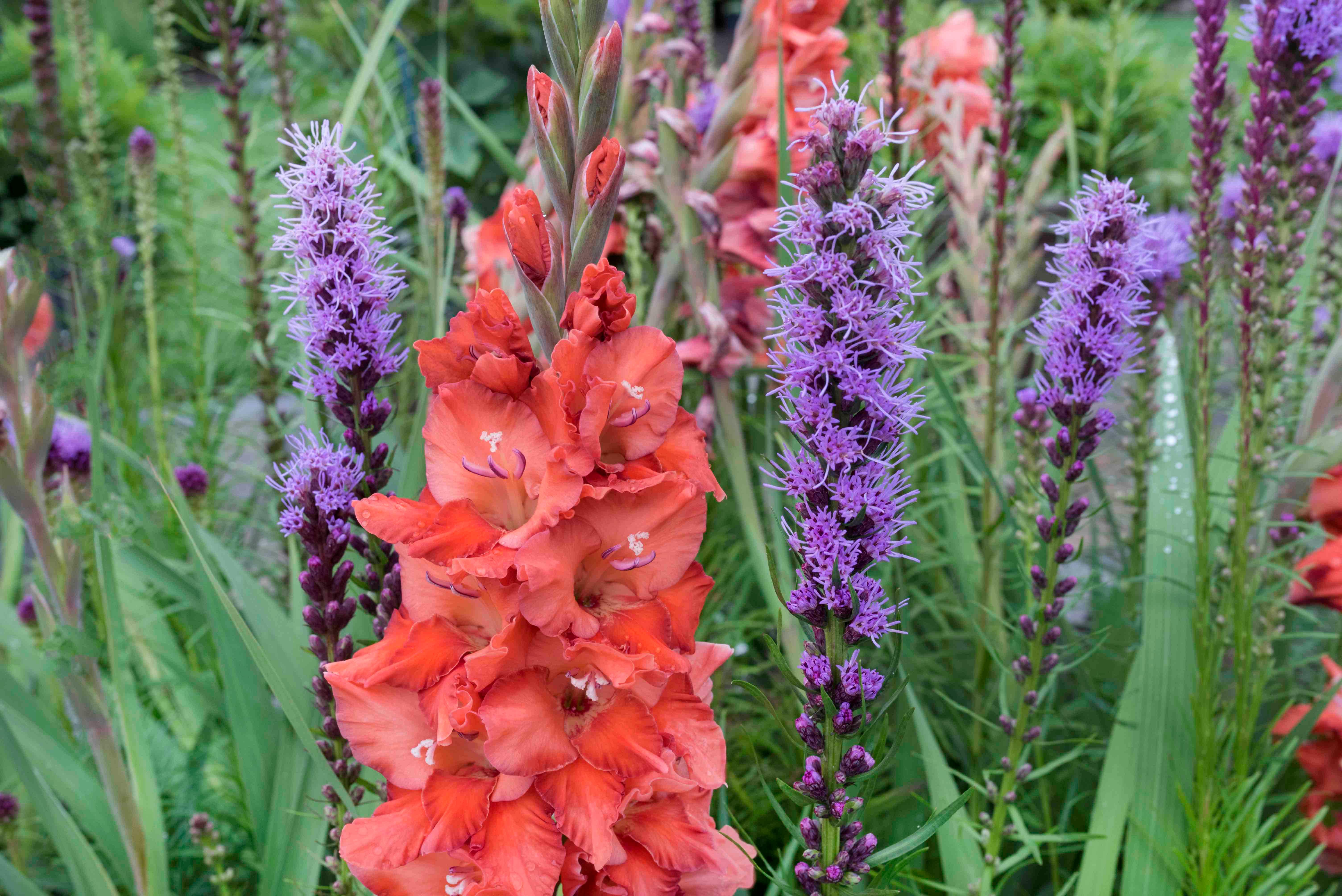
Learn more here:
Best Summer Bulbs for Containers
Shop our entire selection of gladiolus varieties HERE.

